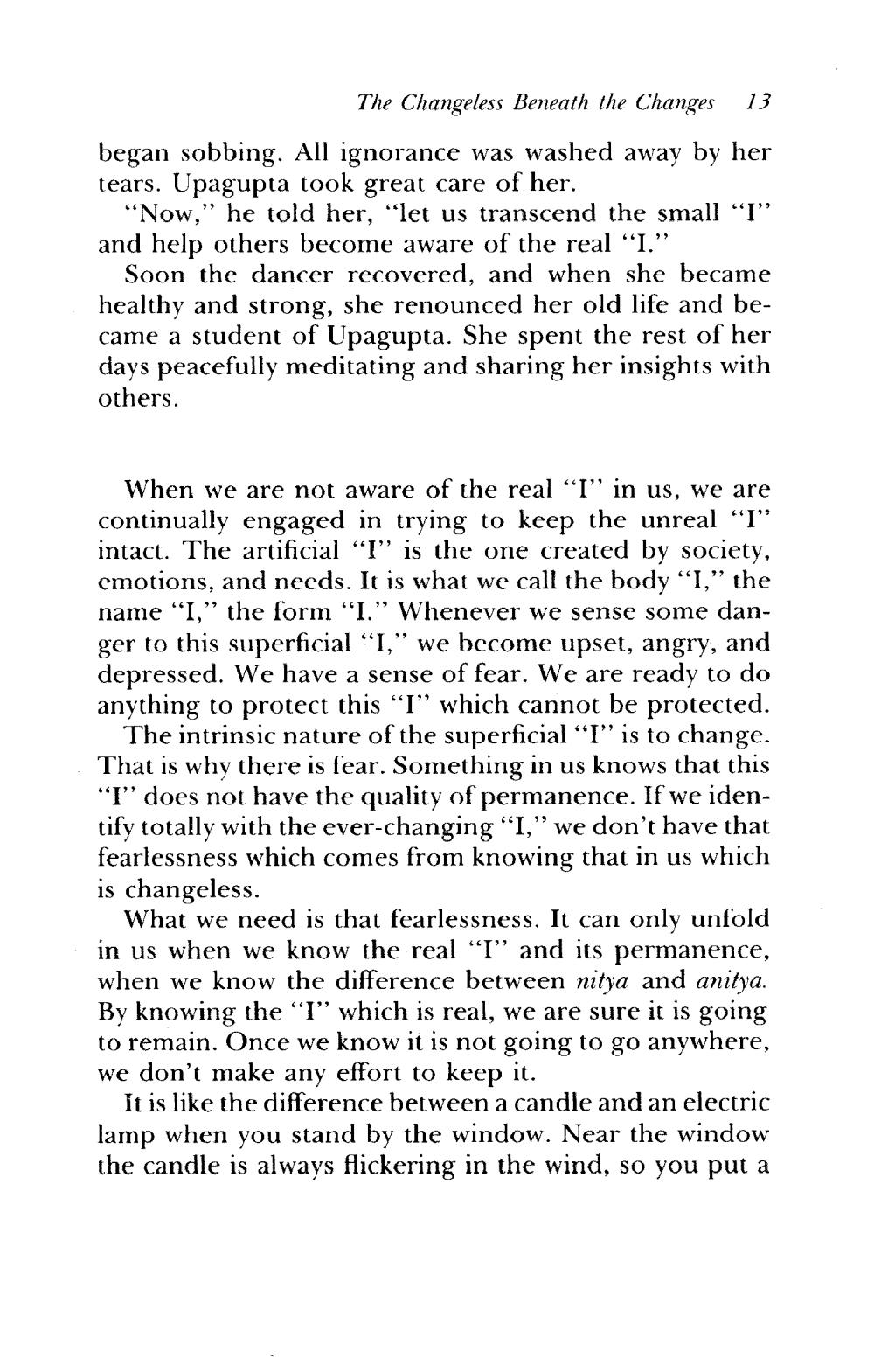________________
The Changeless Beneath the Changes
13
began sobbing. All ignorance was washed away by her tears. Upagupta took great care of her.
“Now," he told her, “let us transcend the small “I” and help others become aware of the real “I."
Soon the dancer recovered, and when she became healthy and strong, she renounced her old life and became a student of Upagupta. She spent the rest of her days peacefully meditating and sharing her insights with others.
When we are not aware of the real “I” in us, we are continually engaged in trying to keep the unreal “I” intact. The artificial “I” is the one created by society, emotions, and needs. It is what we call the body “I," the name “I,” the form “I.” Whenever we sense some danger to this superficial “I," we become upset, angry, and depressed. We have a sense of fear. We are ready to do anything to protect this “I” which cannot be protected.
The intrinsic nature of the superficial “I” is to change. That is why there is fear. Something in us knows that this "I" does not have the quality of permanence. If we identify totally with the ever-changing “I," we don't have that fearlessness which comes from knowing that in us which is changeless.
What we need is that fearlessness. It can only unfold in us when we know the real “I” and its permanence, when we know the difference between nitya and anitya. By knowing the “I” which is real, we are sure it is going to remain. Once we know it is not going to go anywhere, we don't make any effort to keep it.
It is like the difference between a candle and an electric lamp when you stand by the window. Near the window the candle is always flickering in the wind, so you put a




